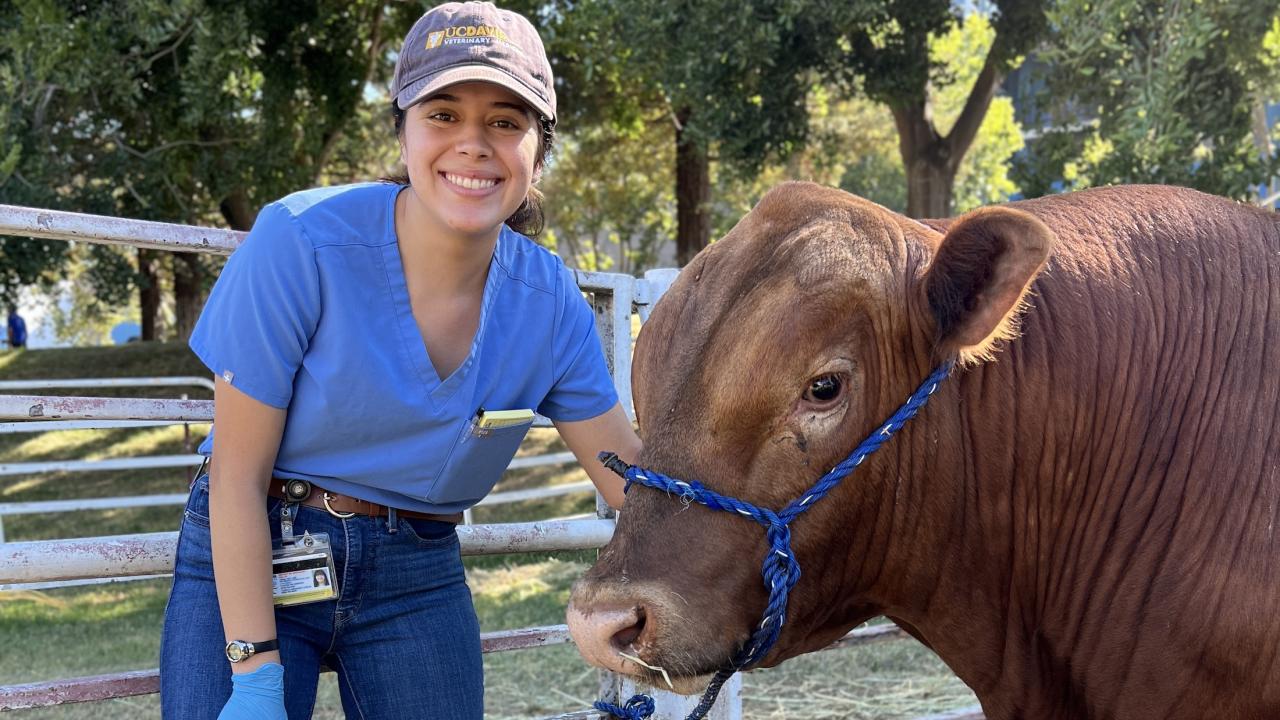
Inspiring Future Livestock Veterinarians
While there doesn’t seem to be a shortage of students wanting to pursue a career in veterinary medicine, few of those future DVMs are focused on livestock medicine. Thanks to a U.S. Department of Agriculture (USDA) grant, a project at the UC Davis School of Veterinary Medicine hopes to spark more interest in the field among high school students.
“There is a crisis in livestock medicine because there aren’t enough people who choose that option,” said Dr. Gabriele Maier, assistant professor of Cooperative Extension and project director. “It’s getting to the point where people who work in that sector have a really hard time hiring associates to their practice. Long term it is also a problem because eventually those veterinarians will want to retire and won’t have anybody to take over their practice.”
Applicants to schools of veterinary medicine expressing interest in livestock medicine continue to be marginal, and a mere 4.2 percent of DVM graduates practice in livestock medicine within a year after graduation. There remains a large gap between the necessity for veterinarians specializing in livestock medicine and interest among veterinary students; however, the potential consequences loom large with the possibility of foreign animal disease outbreaks such as Foot and Mouth Disease, estimated to cost the U.S. $140 billion.
Potential reasons for the lower interest in food animal practice among veterinary students may include the less competitive pay compared to urban private practice, the lifestyle associated with livestock medicine which may involve calls at unpredictable times to perform urgent care, and also the fact that the majority of the admitted student body are from urban backgrounds and may not necessarily have a connection with agriculture.
The program seeks to spark interest among high school students in livestock medicine through three primary methods: creating outreach materials, sending ambassadors in the field to high schools, and creating opportunities for students to gain experience in livestock medicine.
“We make outreach materials trying to reach a younger audience,” said outreach coordinator Cesar Jimenez. “Having a certain level of visual appeal in things you see when going to career day, such as brochures and fliers, is important. What we try to do is make this interesting and digestible for someone who is trying to decide what they want to do with their career, so they think, ‘This is something that I can see myself doing.’”
Ambassadors who are practicing food animal veterinarians will also be sent to high schools to engage with students in career days and other outreach events. The program will be advertised to food animal veterinarians through professional publications. After completing a short online training, ambassadors will be able to explore outreach opportunities at high schools such as career days in their locations.
Lastly, high school students will be able to gain hands-on experience in food animal practice through internships. High school students in Tulare County, including but not limited to Mission Oak High School in Tulare and VTECH in Visalia, will be invited to apply for internship opportunities at the school’s Veterinary Medicine Teaching and Research Center (VMTRC). Among those opportunities is the milk quality internship of VMTRC, which is has been ongoing since 1997, where students gain experience in lab techniques. Additionally, in collaboration with Dr. Sharif Aly at the VMTRC, the team will develop a new internship opportunity for students to shadow veterinarians and see firsthand how food animal vets, through their knowledge and efforts, have a positive impact on animal and public health.
There are high hopes among many that the efforts of this program will inspire a new generation of veterinarians in livestock medicine. The program also seeks to empower students from underrepresented backgrounds to apply for veterinary school by filling gaps in knowledge and breaking through the psychological barriers about the application process to veterinary school, financial resources, and more.
“It’s very exciting because you feel that you are making a difference in schools and helping younger people who perhaps never thought it was possible for them to leave their hometown and go to veterinary school,” Jimenez said.
